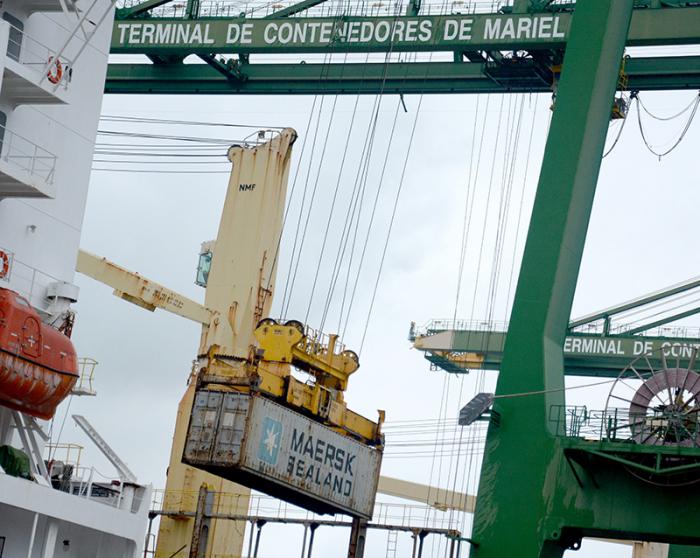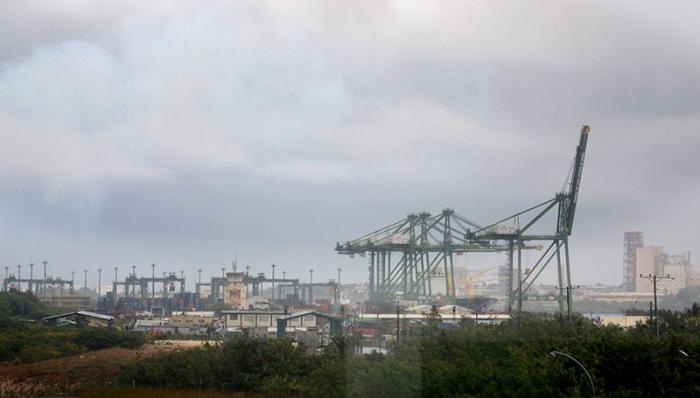
Located 45 kilometers from Havana, the Mariel Container Terminal (TC), the first user of the Special Development Zone, is a 100% Cuban state enterprise, managed under a long-term administration contract by PSA International, the world’s leading port operator.
Director General Charles Alistair Baker told Granma that although slightly behind in terms of planned revenues, the company hopes to be able to overcome this delay in cargo volume.
Our growth is tied to the economic evolution of the country, and we know that it has its challenges, which are even greater since the election in 2016 of a new U.S. government, which has been tougher in the application of its regulations against Cuba, he added.
The Mariel Container Terminal is designed to receive NeoPanamax vessels, and has 702 linear meters of dock, and a depth of 17.9 meters along its entire berth. The turning basin has a diameter of 500 meters and a depth of 15.9m.
Situated on a deep-water bay, the Mariel Terminal is located in the center of the intersection of the main north-south and east-west maritime routes requiring a second transshipment port in the Caribbean region and the Gulf of Mexico, which places it in an advantageous position for trade with the East Coast of the United States.

TC Mariel is equipped with four super post-Panamax cranes, also known as gantry cranes, with a load capacity of 65 tons each; a container yard with an annual combined capacity of 800,000 TEUs (twenty-foot equivalent unit, a measure of volume in units of twenty-foot long containers), operated by 12 RTG rolling gantry cranes, with a lifting capacity of 40 tons each; 22 tow trucks for internal operations traffic; two empty container manipulators; and 1,140 connections for refrigerated, or reefer containers.
The TC also has a state-of-the-art rail yard, with four 650 meter operational lines, and an entry and exit line for locomotives, where operations are carried out with two modern RMG cranes, with a lifting capacity of 40 tons each.
In terms of future investments, one of the reasons why the Mariel TC was created was its international transshipment potential, with a view to making it a regional hub (distribution center). As its Director General explained, in order to meet this objective, the port needs to continue to develop to allow the entrance of larger vessels.
He added that Cuban dredging companies are already working on this process, since it involves widening and deepening the access channel. During 2019, a series of phases should be completed, and we anticipate that over the course of the year, vessels larger than those we are currently handling will begin to enter the port, he noted.
This is a critical step, commented Charles Alistair Baker, because the Mariel TC is designed for this purpose, and once ready, we can begin to negotiate with international shipping companies the possibility that regular services to the region be unloaded in Cuba and then, with a smaller vessel, transported to their final destinations.
“It’s a question of the shipping company seeing the logistic and economic feasibility. It’s quite complex work, but if successful, it will provide more cargo volume for the terminal,” Baker added.
The final project includes the completion of 1,700 meters of dock and 95 hectares of yard, for a docking total of 2,400m, and an annual operational capacity of more than three million TEUs, with a simultaneous increase in technological equipment to reach a total of 24 STS (Ship-to-Shore) cranes and 72 RTG cranes.
Likewise, the number of trucks will increase to 132, alongside 18 RMG cranes (Rail mounted gantry cranes), four vacuum manipulators, and 2,500 reefer connections.
However, as the Mariel TC Director General noted, the present installed capacity of 800,000 TEUs allows the company to continue operating with the potential for growth even before the project comes to an end, since today traffic is around 350,000 TEUs.















